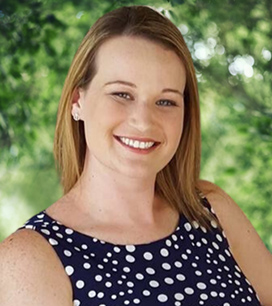Coordinated healthcare services needed across the lifespan for adults with childhood-onset disabilities
School of Physical Therapy professor, Laura Brunton, along with a team of Western researchers, clinicians and staff from Parkwood Institute, and client and caregiver representatives have received a Canadian Institutes of Health Research (CIHR) Team Grant of $539,802 to evaluate and assess a transitional and lifelong care model for adults with childhood-onset disabilities.

Laura Brunton, School of Physical Therapy
Children with chronic developmental conditions, including cerebral palsy, spina bifida and developmental delay often age out of healthcare services when they turn 18. They leave the well-structured pediatric care system during their transition to adulthood and fall off the healthcare sector map. Across Canada, the system for adults currently lacks connection, funding and dedicated providers able to treat adults with childhood-onset disabilities.
There are few centres in Canada treating this population as most stop services between ages 18 and 21, with some specialized services for adults continuing to age 25, according to Brunton.
“It’s unfortunate that places stop services at that age. It’s not as if their diagnosis goes away after age 18 years. If anything, their needs are greater as they get older,” Brunton says.
To address this gap in health care, the Transitional and Lifelong Care (TLC) program at Parkwood Institute in London, Ontario opened in 2014. Offering comprehensive, coordinated care from providers who are knowledgeable about treating childhood-onset conditions in adulthood, clients can access the services of a physiotherapist, physiatrist, dietician, speech-language pathologist and more. Since its inception, the clinic has grown to serve more than 700 patients.
“They need somewhere to go or their concerns never get answered.”
“We often hear how this population doesn't represent a big enough piece of the pie of neurological disorders in the adult world because they are competing for funds and services with stroke, multiple sclerosis, Parkinson’s disease and more,” says Brunton. “But, we have shown there is a need for services for these kids who are transitioning to adults.”
Focusing on care across the lifespan, the study will assess the effectiveness of the TLC program compared to current standards of care. The first year of the project will look at the model from a health economics standpoint, asking whether the program is saving healthcare dollars. Health administration data will be collected and analyzed, including details such as the number of hospital visits and the length of stays when in the hospital for program clients compared to those who are not accessing the services.
Subsequent stages of the project will address caregiver and patient outcomes – reported levels of support and satisfaction with services received and their general health and well-being.
“We are asking, do individuals feel more supported and are their needs being met? We need to include a caregiver perspective where able because a lot of these adults continue to live with a caregiver, whether that is a parent, a spouse or someone who provides care for them formally like a personal support worker,” explains Brunton.
Patients without access to a collaborative care program often rely on their general practitioner (GP) to manage their cases, which can be problematic according to Brunton. When they first come to the program the average client has nine concerns that need to be addressed in their initial visit. GPs often limit the number of concerns that can be dealt with each visit, keeping in line with the medical model for billing – but these patients and their concerns do not fit that model. Being limited to only addressing dire needs or attending multiple visits is not efficient or feasible for the patient, the caregivers or health service providers.
“They need somewhere to go or their concerns never get answered,” says Brunton.
Brunton and team plan to use the study results to make recommendations for rolling out and scaling up additional programs across Ontario and eventually nationwide.
“Our whole take-home for this is that we want to show that it is effective so that more programs can be modelled after it,” she says.
The team hopes to share their model, beginning with clinics that are seeing young adults so that they can grow their programs to continue care across the lifespan. These clinics already have highly trained people engaged and other resources at hand to provide services for more adults with childhood-onset disabilities with significant care needs.

